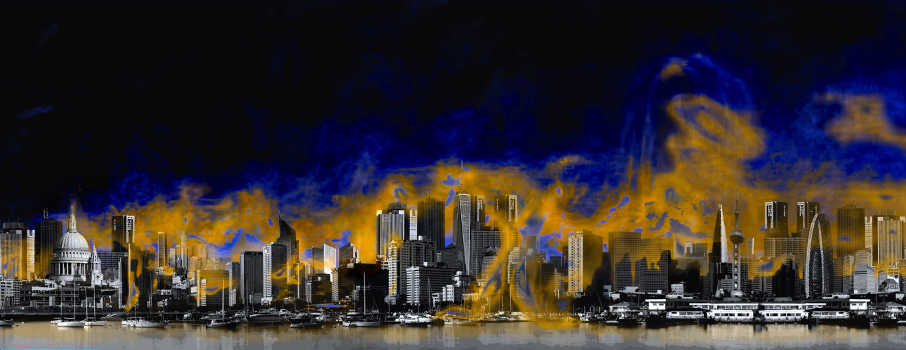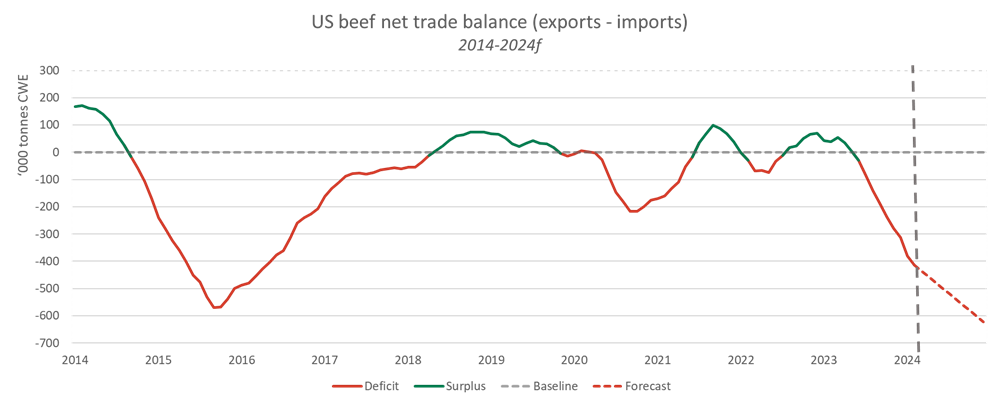
An illustration of atmospheric inhomogeneities in a megacity, showing “Large Eddy Simulations” of Hong Kong superimposed on a composite London skyline. The resulting inhomogeneities in ammonia and nitric acid vapours can drive particle growth rates to up to more than 100 times faster than previously seen. (Credit: Helen Cawley)
The CLOUD collaboration has revealed a new mechanism that drives winter smog episodes in cities. The results, published yesterday in the journal Nature, could help inform policies for reducing urban particle pollution, which ranks fifth in the risk factors for mortality worldwide.
Winter urban smog episodes occur when new particles form in polluted air trapped below a temperature inversion. The warm air above the inversion inhibits convection, causing pollution to build up near the ground. However, how additional aerosol particles manage to form and grow in this highly polluted air has been a mystery until now, because they should be rapidly lost through scavenging by pre-existing aerosols. A new result from CLOUD could explain the mystery.
The CLOUD experiment (Cosmics Leaving Outdoor Droplets) at CERN involves a special cloud chamber capable of mimicking all the diverse aspects of Earth’s atmosphere, with precise control of the conditions and extremely low contaminants. Data from sampling instruments attached to the chamber allow a comprehensive understanding of the formation of aerosol particles and their effect on clouds and climate. Ions from cosmic rays can also influence aerosol formation, and their contributions are studied by varying the intensity of a pion beam from CERN’s Proton Synchrotron, which passes through the chamber.
In their new study, CLOUD scientists simulated polluted urban conditions in the chamber and investigated the role of ammonia and nitric acid at atmospheric concentrations. Global emissions of ammonia are dominated by farming. In cities, however, the presence of both ammonia and nitric acid – which derives from nitrogen oxides (NOx) – is largely due to vehicles.
“Ammonia and nitric acid were previously thought to play a passive role in particle formation, simply exchanging with ammonium nitrate in the particles”, says Jasper Kirkby, head of the CLOUD experiment.
However, the new CLOUD study showed that small inhomogeneities in the concentrations of ammonia and nitric acid – which only persist for a few minutes – can lead to particle growth rates up to more than 100 times faster than previously seen, but only in short spurts that have escaped detection so far. These ultrafast growth rates are sufficient to rapidly transform the newly formed particles to larger size, where they are less prone to being lost through scavenging by pre-existing particles. The end result is a dense smog episode with a high number of particles.
“Although the emission of nitrogen oxides is regulated, ammonia emissions are not and may even be increasing with the latest catalytic converters used in gasoline and diesel vehicles. Our study shows that regulating ammonia emissions from vehicles could contribute to reducing urban smog,” concludes Jasper Kirkby.

CLOUD experiment (Image: CERN)






